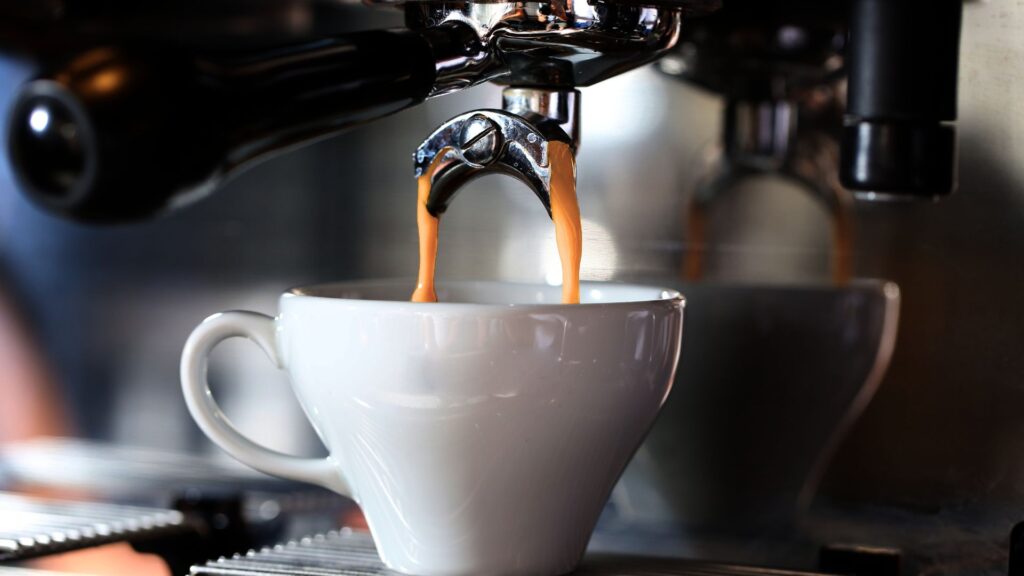
The history of coffee: From its origins to modern-day cafes
Coffee is one of the world’s most beloved beverages, enjoyed by millions of people every day. Whether it’s a morning ritual to kickstart the day or a social activity to share with friends, coffee has a long, fascinating history. From its humble beginnings in Ethiopia to the rise of modern-day coffeehouses and global chains like Starbucks, coffee has undergone a remarkable journey.
In this article, we’ll explore the rich history of coffee, how it spread across the world, and its evolution into the coffee culture we know and love today:
- The origins of coffee in Ethiopia
- Coffee’s spread: From the Arab world to Europe
- The rise of coffee in the modern era
- Coffee today: A global industry
- Coffee’s ongoing influence
The origins of coffee in Ethiopia
The story of coffee begins in Ethiopia, the birthplace of the coffee plant. According to legend, coffee was discovered by a goat herder named Kaldi in the 9th century. Kaldi noticed that his goats became more energetic after eating the red berries from a particular tree. Curious about this, Kaldi tried the berries himself and soon experienced a burst of energy. He shared his discovery with a local monk, who found that brewing the berries into a drink helped him stay awake during long hours of prayer. This was the first known use of coffee, and its energising effects quickly caught the attention of others.

While the exact timeline is debated, coffee began to spread beyond Ethiopia. By the 15th century, coffee was being cultivated in the Arabian Peninsula, particularly in Yemen. The Arabian people were the first to develop a method for roasting and brewing the beans, which allowed them to enjoy coffee as we do today. As coffee’s popularity grew, it became an important part of cultural and social life in the region.
Coffee’s spread: From the Arab world to Europe
Coffee’s journey continued through the Arab world, where it became deeply ingrained in social and religious practices. In the 15th century, the first coffeehouses, known as qahveh khaneh, opened in Mecca. These establishments quickly became popular gathering spots for conversation, business dealings, and intellectual debates. Coffeehouses were so important in the region that they were sometimes referred to as “schools of the wise” because of the lively discussions that took place within their walls.
By the 16th century, coffee had spread to the Ottoman Empire, Persia, and North Africa, where it was enjoyed by people from all walks of life. The drink continued its journey westward, reaching Europe in the early 17th century. The first European coffeehouse opened in Venice in 1645, but it was in England that coffeehouses truly flourished. In 1652, the first coffeehouse in London was established, and it quickly became a hub for intellectual exchange. These early coffeehouses in London were known as places for lively debates and discussions, often attracting writers, artists, and politicians. They became known as “penny universities” because for the cost of a cup of coffee, you could gain access to stimulating conversation and new ideas.
As coffeehouses spread throughout Europe, they became increasingly popular, especially in cities like Paris, Vienna, and Amsterdam. In the 17th century, coffee was introduced to France by merchants, and soon coffeehouses became central to the social life of Paris. By the 18th century, coffee had become firmly entrenched in European culture, and it began to be traded internationally as a commodity.

The rise of coffee in the modern era
The 20th century saw coffee’s evolution into the global beverage we know today. In the early 1900s, coffee was primarily consumed in the form of simple brewed coffee, but advancements in technology and the growth of consumer culture began to shape coffee-drinking habits. The invention of the espresso machine in the early 20th century in Italy revolutionised how coffee was prepared. The espresso machine allowed for a faster, more concentrated coffee, which became the base for a variety of coffee drinks, including cappuccinos and lattes.
Espresso bars began to emerge in Italy in the 1940s and 1950s, bringing a new culture of quick, high-quality coffee. This shift marked the beginning of a transformation in how coffee was consumed. As coffee machines became more advanced, espresso bars grew in popularity across Europe and beyond.
In the United States, coffeehouse culture exploded in the 1990s with the rise of Starbucks, a company that revolutionised the coffee shop experience. Starbucks, founded in 1971, became a global brand by the 1990s, introducing the world to specialty coffee drinks like the Frappuccino and offering a café-like environment where people could relax, work, or meet friends. The popularity of Starbucks led to an explosion of coffee chains worldwide, from independent local cafés to global franchises.
The rise of specialty coffee shops also gave birth to a new culture of coffee appreciation. Baristas began to focus on the art of brewing, with an emphasis on high-quality beans, precision, and innovation. This shift saw the birth of the third wave coffee movement, which prioritised direct relationships with coffee producers, the exploration of unique flavours, and a deeper understanding of the coffee-growing process.
Coffee today: A global industry
Today, coffee is one of the most traded commodities in the world, with millions of cups consumed globally every day. The modern coffee industry is vast, and coffee is enjoyed in a wide variety of forms—from traditional black coffee to artisanal brews and specialty drinks. The rise of specialty coffee has introduced new flavours and brewing methods, with a focus on quality and sustainability. Coffee roasters and cafés are now dedicated to sourcing high-quality beans from around the world, often working directly with farmers to ensure ethical and sustainable practices.
In recent years, sustainable and fair-trade coffee has gained significant attention. Consumers are increasingly aware of the environmental and social impact of their coffee choices, and many seek out beans that are certified as fair trade or organic. These certifications ensure that farmers are paid fairly and that environmentally-friendly practices are used throughout the coffee production process. As coffee drinkers become more conscious of these issues, the demand for ethically sourced coffee continues to grow.
Coffee’s ongoing influence
From its origins in Ethiopia to its status as a global commodity today, coffee has come a long way. It’s no longer just a drink—it’s become an integral part of social culture, from the intellectual conversations of early coffeehouses in the Arab world to the bustling coffee shops of the modern-day. The evolution of coffee culture has led to new trends, from specialty coffees to sustainable sourcing, and the beverage continues to influence cultures worldwide.
Here’s our quick summary:
- Coffee is believed to have been discovered in Ethiopia in the 9th century, where it was initially consumed as an energising drink made from coffee berries.
- Coffee spread across the Arab world in the 15th century, reaching Europe by the 17th century. Coffeehouses became cultural hubs, especially in places like London, Paris, and Venice.
- The 20th century saw the rise of espresso machines, coffee bars, and global coffee chains like Starbucks, which popularised specialty coffee drinks and coffeehouse culture.
- Today, coffee is one of the world’s most traded commodities. The focus has shifted to high-quality, sustainable, and fair-trade coffee, with many consumers prioritising ethical sourcing.
- Coffee has evolved from a simple beverage to a global cultural staple. Its history continues to shape modern coffee culture, with trends like specialty coffee and sustainability playing key roles in the industry.
As coffee continues to evolve, one thing remains clear: it’s more than just a drink. It’s a global tradition, a daily ritual, and a way for people to connect. Coffee has become a true staple of modern life, and its impact on culture and society is still going strong. Whether you prefer a simple black coffee, a complex espresso, or a trendy coffee drink from your local café, coffee’s rich history and global influence will continue to shape the way we enjoy it for years to come.
💡On a more critical note: Child labour in coffee production is a significant issue in some coffee-growing regions, particularly in countries where poverty is widespread and education may be limited. In these areas, children are often forced to work on coffee farms, engaging in tasks such as picking coffee cherries or carrying heavy loads, instead of attending school or playing. This exploitation not only deprives children of their basic rights but also hinders their development and perpetuates cycles of poverty. Fair Trade certification can offer a solution by ensuring that coffee farmers receive a fair price for their crops, which can help improve living conditions and reduce the need for child labour. By choosing Fair Trade coffee, consumers are supporting a system that promotes ethical practices, better wages for farmers, and a commitment to eliminating child labour, making it a better choice for those concerned about the social impact of their coffee consumption.
